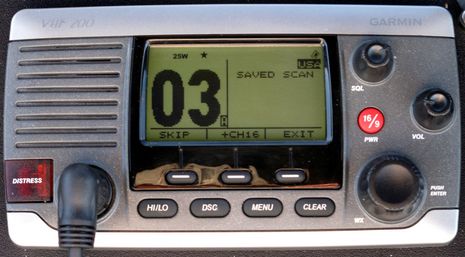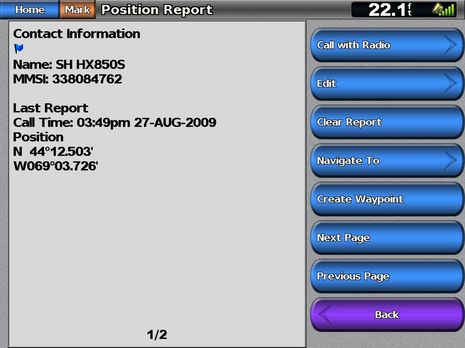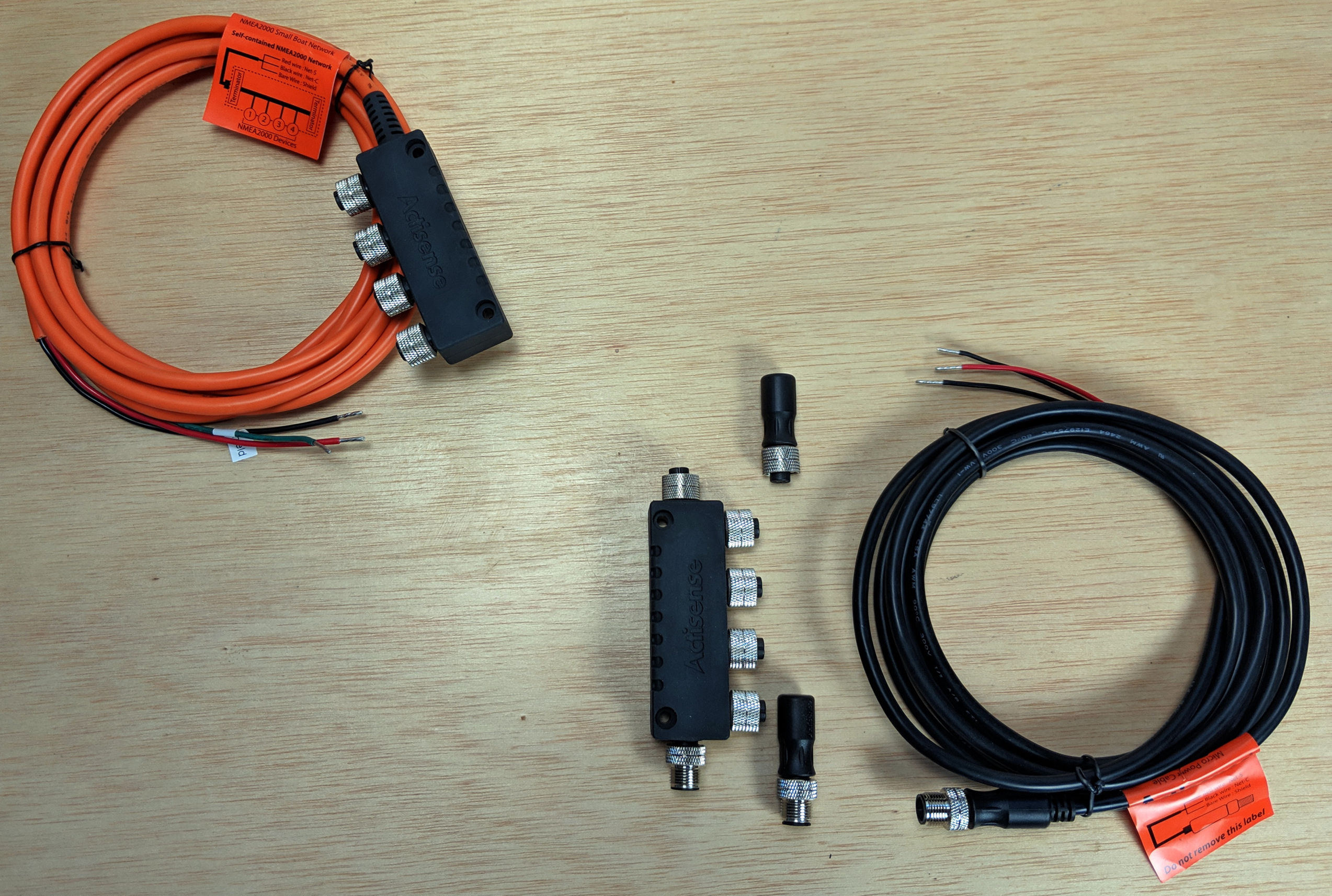Garmin VHF 200, first impressions
It took a while, but the premium Garmin VHF 200 is now a reality, and it’s a corker. I installed a sample on Gizmo yesterday and spent a fair bit of the day listening to it and trying out DSC features. As Bill Lentz noted in a recent comment, the 200 is a snap to hook up using NMEA 2000, instantly getting GPS off the backbone and delivering DSC call info to any device that knows what to do with it (unfortunately few so far). It also seems to have a sensitive receiver and a nice way of pausing enough in scan mode that you’ll often hear both sides of a conversation. But he didn’t get into how well the soft key scan (and other) menus work…
When you select Scan from the top soft key menu, you get a choice of All channels, Saved channels (“Tagged” in Icom talk), or Save /unsave this channel to the saved list. In the photo I’ve chosen my saved set of favorite local channels and now can decide if I want to prioritize channel 16 (i.e. check 16 between each channel instead of going all the way around the list), and when it pauses for boring traffic, I can Skip it. A lot of VHFs have these features, but some like priority scan are usually buried in menus or activated by an odd key press. (I also checked the manual for the Raymarine Ray218 — a similar triple soft key radio I’ve admired but never tried — wondering if Garmin had ‘borrowed’ some interface ideas; nope, not so.)
Of course the really interesting thing about the VHF 200 is what it can do if it’s on an N2K backbone with a Garmin MFD. In the screen below, I’d sent the 200 a position report from a Standard Horizon HX850S, and once I acknowledged it on the 200, it popped up with that blue flag symbol on the 5212’s chart (it also appeared on the Lowrance HDS-10 chart), and Review took me to this screen. It has the name “SH HX850S” because I’d already entered the handheld’s MMSI and name on the 5212 (easy with the touch screen keyboard). If this was a new MMSI to the MFD, I could use the Edit button to name it.
Also, if the HX kept sending positions, the 5212 would draw a track of those positions with the flag on the most recent. Actually, according to the manual, the 5212 can do all that for the output from any DSC radio, even using NMEA 0183. But you won’t see the Call with Radio button unless you have a VHF 200 (or the coming VHF 300) hooked up via N2K. And that Call button works slick, whether you’re returning a call or initiating one to a contact on your list (up to 100) or an AIS target. The 5- and 4000 Series let you choose a working channel from a big selection (and remembers your last choice) and then sets the call up on the 200 such that you just have to push the place call soft key.
Now easily ringing up AIS targets was first introduced by Simrad with the AI-50 transponder and its SimNet VHF sets. I haven’t tried the AI50 I’m testing with the VHF 200 but very much doubt it will initiate a call, for the same reasons that the 5212 is no longer seeing its Class B targets; NMEA was so slow to develop N2K AIS and VHF messages that the manufacturers had to use proprietary ones, and it’s going to take a while to iron out the compatibility issues. It’s also possible that same brand radios and MFDs will always have a leg up in terms of advanced integration features (though I was a bit disappointed that the contact list easily created on the 5212 does not get added to the VHF 200).
For instance, I’m looking forward to trying the VHF 200’s ability to track up to three MMSI’s using position requests, which I think will create track lines on the Garmin MFD, and a similar buddy tracking feature built into Lowrance HDS and its DSC VHFs. I remain convinced that MFD/VHF/AIS integration will be the key to finally making DSC calling more common and more useful.
















VHF 100 should be able to do similar set of “advanced DSC” functions over NMEA 0183, at least position pooling as it is anounced on https://buy.garmin.com/shop/shop.do?cID=250&pID=28719
Very interesting that Garmin used N2k at all, being that the PGNs for VHF data aren’t fully realized. They could have gone with Ethernet, another universal cabling standard, carrying proprietary data.
Ben; I have been using my Navionics AIS300L transponder (N2K) to grab the target MSSI, then with a simple push of a button I can call the ship via MMSI even requesting taking them to a talk channel of my choice. I have done this a few times to see if the Class A AIS vessels can actually see me. So far I’m 6 for 6. Using the DSC functions from my Garmin 4212 OR 4210 the call is set up on the Garmin VHF200 screen all I have to do is hit send. This is a very cool and practical function of the 3 devices all woring well together. The only problem I have is both radio’s get the display MMSI send data on their screens. Still a minor flaw possibly not even a flaw I guess it depends on how you look at it.
Bill Lentz
Wireless One, Little Egg, NJ
40 Mainship Sedan Bridge
Comment on my Garmin VHF 200 that was purchased as one of the first issued:
This VHF has been one of the biggest failure products Garmin ever produced. I won’t get into all the problems I’ve had, but will say my radio has been back to Garmin for repair under warranty three times. I should have abandon it early on but stuck it out. Even now the radio does not work properly when “Local” is selected. I do like the N2K integration, the high clear volume and big display. However, the depth dimension is restrictive on where I was able to install it. Now, as I redesign my nav station front panel I again find it hard to squeeze in because of the deep dimension of the chassis.
What I need is a VHF radio with shallow depth like the Icom 504, but also with N2K. Why has it taken manufacturers so long to design all VHF’s with NMEA 2000? I haven’t read a single worthwhile reason for not including N2K in every VHF radio. Is there some reason I’m missing that in 2014 VHF’s still want NMEA 0183 for DSC?
Did you look at the Simrad RS-12? Not the highest spec VHF radio but it does have a NMEA2000 port. It seems a bit smaller in footprint also.